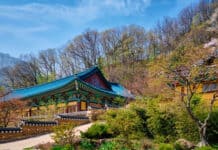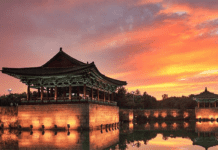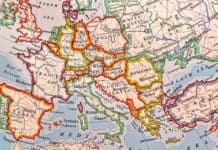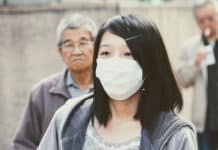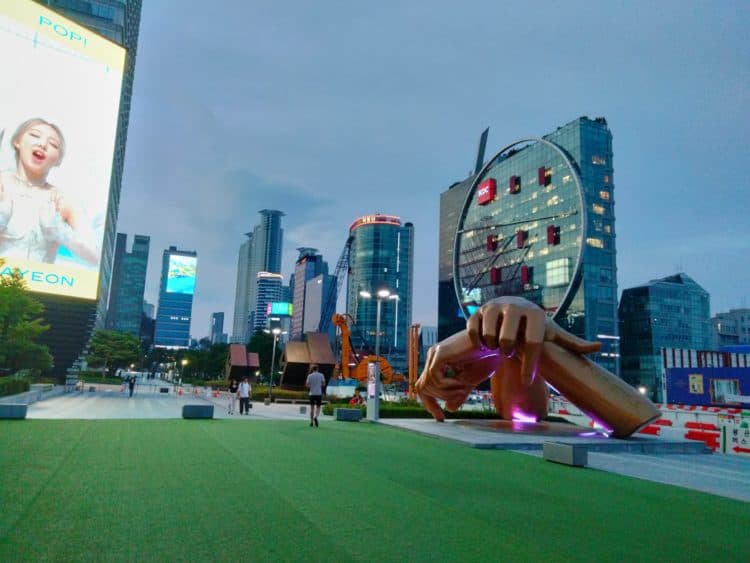
The tech-forward destination of South Korea offers unconventional venues and authentic cultural immersion.
On a recent visit, Prevue got a sneak peek at the variety of unique options available for those planning meetings and events in this dynamic destination. The itinerary put the focus on Korea Unique Venues, a selection of 39 unconventional spaces that showcase the country’s culture and creativity.
Our tour began in Seoul’s iconic Gangnam District, made famous by the 2012 K-Pop song “Gangnam Style” by Psy, which is commemorated by a 17-ft-tall statue of golden hands performing the gesture from the song’s famous dance. The statue is located outside an entrance to the COEX Mall, Asia’s largest underground shopping mall, and set against a futuristic backdrop of skyscrapers and building-sized video screens broadcasting K-Pop idols.
An unmissable experience in Gangnam is a visit to the top of the Seoul Sky Tower for an unparalleled view over the capital. Standing 123 stories and 1,820 ft high, the tower is the world’s fifth largest building and offers spectacular panoramic views from the glass-floored Sky Deck. Nearby hotels include the 1,015-room Lotte Hotel Seoul located in Seoul’s central business district.
For a step back in time, we headed south to Jeonju for a journey into traditional Korean culture. Known as “the ground of more than 1,000 years of history,” a district of the city designated Jeonju Hanok Village consists of 735 traditional hanok houses featuring distinctive tiled roofs and a floor-based heating system. Today many of the hanoks are occupied by cafes, restaurants, guest houses and boutique stores, including costume stores where visitors can rent a hanbok, the Korean traditional dress, to wear while exploring the hanok village, for photo-ops or special events. Attractions include Gyeonggijeon Shrine, built in 1410, and Jeonju Hyanggyo, a Confucian temple dating from 1354. Also located in the village is the Jeonju Korean Traditional Wine Museum, where groups can participate in a hands-on rice wine making experience, learn about the history of Korean soju (liquor) and try some samples.
An unconventional accommodation option in Jeonju is the Royal Room of King, designated a Korea Unique Venue, which offers further cultural immersion. This hotel consists of 11 hanok-style buildings and can accommodate up to 232 people. It also has its own convention center with five halls, the largest of which can accommodate up to 150 people, a restaurant serving Korean cuisine, and plenty of stunning outside space set against a mountain backdrop.
From cultural immersion, we next delved into the country’s political history with a visit to Gwangju, where the main protests that eventually led to the establishment of Korean democracy took place. Located at the site of this historic event is the Asia Culture Center (ACC), an arts complex and a Korea Unique Venue that consists of five buildings dedicated to international art and cultural exchange. Current exhibitions included photography from the Gwangju Uprising, taken in the area currently occupied by the ACC buildings, as well as several interactive exhibits combining art and science.
Groups can further deepen their cultural experience of Korea at the Gwangju Traditional Culture Center, where Korean holders of UNESCO Intangible Cultural Heritage transmit traditional culture through group programming and performances. We attended a performance of music played on the gayageum, a 12-string Korean instrument resembling a zither, had a lesson in playing it ourselves, and then learned how to sing ‘Arirang,’ a well-known Korean folk song. Yeosu on the south coast of Korea was our next destination, which played host to Expo 2012, and offers a range of facilities at the Expo Convention Center. Spaces include a Conference Hall with 400 capacity and theater-style Expo Hall with seating for 1,000. Outdoor spaces include the unique Big-O Sea Stage, which hosts the only large-scale sea water jet show in Korea, combining lights, fireworks and water jets. Another outdoor space is the 96,875-sf Expo Digital Gallery, a covered courtyard area featuring a vast overhead digital display, suitable for large-scale events.
Also located at the complex is the Arte Museum, Korea’s largest media art exhibition. Occupying almost 50,000 sf of space, the exhibition consists of 10 huge rooms that combine light, sound, mirror and video to create unforgettable immersive experiences.
Situated at the harbor, the Expo complex is a transport hub with a train station, bus station, airport and cruise terminal all located nearby. It’s served by several hotels located minutes away, including the stylish, 310-room SONO Calm Yesou. Less than an hour away is the Suncheonman Bay Nature Reserve, a coastal wetland that comprises a 5,490-acre tideland, 2-mile stream and 570-acre field of reeds. This unspoiled expanse of Korea’s pristine natural landscape makes an ideal excursion for groups that want to see more of Korea than just its cities.
Returning again to Seoul by high speed train, we toured two more Korea Unique Venues, including the National Museum of Korea, featuring more than 420,000 objects presenting thousands of years of cultural history. The museum offers event space including a 20,795-sf main auditorium that seats 416 and a 39,525 sf outside plaza.
Floating Island Convention is a waterfront convention center situated on three man-made floating islands on the Hangang River, and is designated a Korea Unique Venue. The space offers seven banquet halls, including an 8,202-sf Convention Hall, as well as
an indoor/outdoor terrace that can accommodate up to 1,000.
Convention hotel options in the capital include Seoul Dragon City, a complex in the central Yongsan District that includes four hotels—Novotel, Novotel Suites, Grand Mercure and Ibis Styles—connected by a sky bridge. The complex has a dedicated convention tower with spaces including two large ballrooms and a range of conference rooms options.
The tour also included a visit to Incheon, part of the Seoul Capital Area. It’s home to Cosmo 40, an urban redevelopment project that converted a former chemical factory into a multi-use cultural complex that offers 10,000 sf of space over four floors. Another spot guaranteed to impress in Incheon is Panoramic 65, a Korea Unique Venue situated on the 65th floor of the Oakwood Premier Incheon, which offers sweeping views of the sea and Songdo’s skyline and can host 120 for a reception.
A luxury accommodation option for groups in Incheon is the vast Paradise City, located just minutes from the airport. This art- and design-themed resort hotel features more than 3,000 artworks, as well as a spa, casino, theme park and art gallery. Meeting space includes a grand ballroom that can accommodate up to 1,820 people, two banquet halls and several smaller meeting rooms.
DON’T MISS THESE RELATED ARTICLES
3 Bucket-List Experiences in South Korea
5 Downright Transformational Spots in South Korea



